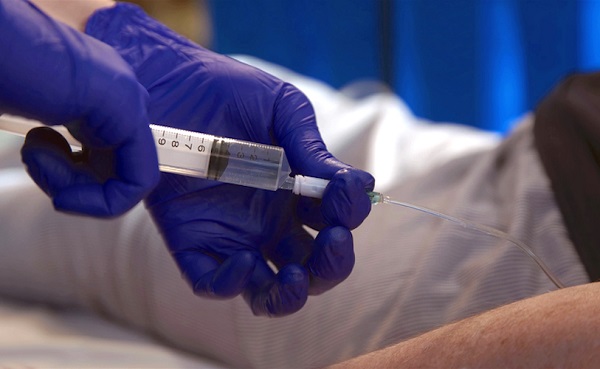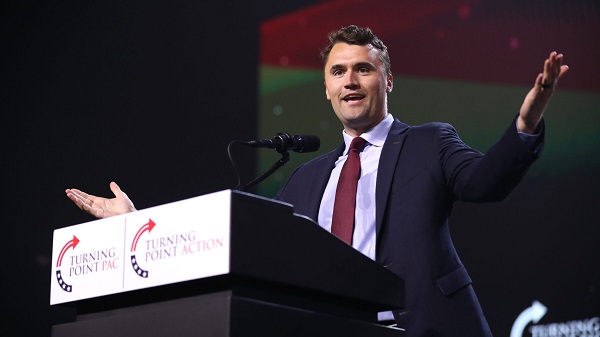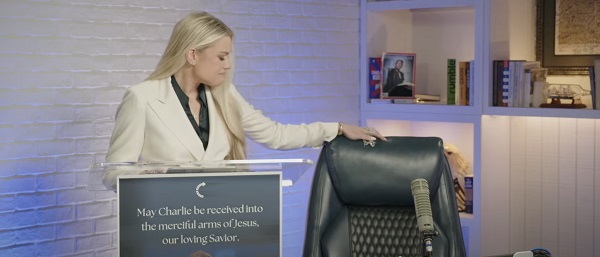Health
Patients are being taken for organ retrieval while still alive

From LifeSiteNews
RFK Jr.’s HHS has launched a ‘major initiative’ to reform the organ transplant system after an investigation found multiple patients who were not dead were taken for organ procurement.
On July 21, 2025, the U.S. Department of Health and Human Services (HHS) under Robert F. Kennedy, Jr. announced a major push to begin reforming the U.S. organ procurement and transplantation system. This announcement was prompted by a Health Resources and Services Administration (HRSA) investigation that uncovered multiple examples of patients who were not dead when they were taken for organ procurement.
The HRSA investigation revealed that out of 351 cases studied, 103 (29.3 percent) were found to have problems. They discovered 73 patients (21 percent) who were authorized for organ procurement despite having neurological signs incompatible with organ donation. And disturbingly, at least 28 patients (8 percent) may not have been deceased when doctors began surgery to remove their organs.
The independent HRSA investigation began after the Organ Procurement and Transplantation Network (OPTN) claimed to find no major concerns in their review of the 2021 TJ Hoover case. TJ Hoover, a supposedly “brain dead” man, began thrashing and crying as he was being wheeled to the operating room to donate his organs. His family was told that this was just “reflexes.” Whistleblowers claimed that even after two doctors refused to remove Hoover’s organs, Kentucky Organ Donor Affiliates ordered their staff to find another doctor to perform the surgery. Thankfully, surgery was called off, and Hoover went on to recover and even dance at his sister’s wedding.
On July 20, 2025, the New York Times published an article reporting multiple cases of donors who were not dead when they were scheduled for organ procurement. This article focused on the problems of “donation after circulatory death” (DCD). In DCD, patients are not “brain dead” but either are not expected to survive or have decided that their quality of life is unacceptable. Their deaths are planned to occur at a specific place and time so that they can become organ donors.
The patient is made “do not resuscitate” (DNR), ventilators and infusions are withdrawn, and doctors wait until the patient’s heart stops. Then, depending on the transplant center, a two-five minute “no touch” period is observed, following which (if the heart doesn’t restart on its own) organ procurement immediately begins. However, it is well documented that people are routinely resuscitated after just two-five minutes of pulselessness – and if you could possibly be resuscitated, you were never dead.
But because DCD donors have been made DNR, they will not be resuscitated. In 2007, Dr. Ari Joffe published a report of a dozen patients whose hearts started beating again spontaneously after as many as 10 minutes of cardiac arrest, with some of them making a full recovery. This shows that people cannot be known to be dead until at least ten minutes after their cardiac arrest. But doctors are currently moving more quickly because waiting ten minutes makes it too late to successfully harvest most of the organs. The current two-five minute “no touch” period is much too short and essentially guarantees that more people will be waking up under the knife. Other countries recognize these dangers, and DCD is banned in Finland, Germany, Bosnia-Herzegovina, Hungary, Lithuania, and Turkey.
One of the cases described in the New York Times article was that of DCD donor Misty Hawkins. After a choking accident, Hawkins suffered a brain injury and was comatose on a ventilator. She was not brain dead, but doctors told her parents that she would never wake up. Her mother did not want Misty to suffer, and because she wanted something good to come out of this tragedy, she consented to making her daughter a DCD organ donor.
Misty was taken to the operating room, where a doctor took her off the ventilator and gave her drugs for comfort. Her heart stopped 103 minutes later. After a five-minute waiting period, surgery began. But when surgeons sawed through her breastbone, they discovered that Misty’s heart was beating and that she was gasping for breath. Organ retrieval was called off, and 12 minutes later, Misty was declared dead a second time. It is unclear whether she received any anesthesia. At the time, her parents were only told that Misty had been unable to donate her organs. It was not until they were contacted by the New York Times over a year later that they learned the rest of the story.
Yesterday morning, I sent a formal complaint to the OPTN, HRSA, and the investigating U.S. House committee that was signed by over 300 doctors, nurses, lawyers, philosophers, PhDs, and citizens.
I am very encouraged that so many are finally taking these deeply problematic practices seriously. But going forward, this is going to be a difficult moral, medical, and legal knot to untangle. As our country seeks solutions, these are the key goals I have identified:
- The public needs full transparency about how death is declared prior to organ and tissue procurement, for without transparency there is no true consent.
- We need an opt-out exemption to a brain death diagnosis nationwide. There are eight states with medical freedom laws that allow healthcare providers to opt out of participating in a brain death case, but the only state where patients have this right is New Jersey. And New Jersey’s law only provides for a religious exemption: people should be able to opt out for any reason.
- Hospitals must mandate that doctors obtain informed consent before embarking on a brain death diagnosis, including the dangerous apnea test that can make a brain injury worse and has risks of hypotension, pneumothorax, and cardiac arrest.
It is also encouraging that many doctors are now taking a closer look at organ procurement and are interested in making changes. Living donation, in which both the donor and the recipient remain alive after the procedure, is completely ethical and can provide every organ except the heart. And a fully implantable artificial heart is currently in clinical trials. I am hoping that greater transparency will actually lead to more life-saving transplants, not less. After all, “brain death” accounts for <1% of reported deaths nationwide, whereas the number of living donors is potentially vast.
Hopefully we can provide justice for the families who have been hurt by the current unethical system without jeopardizing ethical forms of organ transplantation.
Heidi Klessig MD is a retired anesthesiologist and pain management specialist who writes and speaks on the ethics of organ harvesting and transplantation. She is the author of “The Brain Death Fallacy”, and her work may be found at respectforhumanlife.com.
Health
Canadians left with no choice but euthanasia when care is denied

From LifeSiteNews
Ontario’s euthanasia regulators have tracked 428 cases of possible criminal violations without a single criminal charge being laid.
Once again, a government report affirmed what every Canadian should know by now: People are being killed by euthanasia because they cannot access the care they actually need and in some cases are denied that care.
The “choice” that is left to them is a lethal injection. Ontario’s Medical Assistance in Dying (MAiD) Death Review Committee’s (MDRC) latest report, “Evaluating Incurability, Irreversible Decline, and Reasonably Foreseeable Natural Death,” highlights this fact once again.
As Dr. Ramona Coelho, an advocate for people with disabilities and one of the most eloquent opponents of Canada’s MAiD regime highlighted in her analysis of the report, Health Canada dictates that a “person can only be considered incurable if there are no reasonable and effective treatments available (and) explicitly state that individuals cannot refuse all treatments to render themselves incurable, and thereby qualify for MAiD.”
However, the MDRC’s report cites cases that do not appear to qualify:
Consider Mrs. A: isolated, severely obese, depressed, and disconnected from care; she refused treatment and social support but requested MAiD. Instead of re-engaging her with care, MAiD clinicians deemed her incurable because she refused all investigations, and her life was ended.
Or Mr. B: a man with cerebral palsy in long-term care, he voluntarily stopped eating and drinking, leading to renal failure and dehydration. He was deemed eligible under Track 1 because his death was consequently considered “reasonably foreseeable.” No psychiatric expertise was consulted despite signs of psychosocial distress.
Or Mr. C: a man in his 70s with essential tremor, whose MAiD provider documented that his request was mainly driven by emotional suffering and bereavement.
In short, Coelho concludes, “Canada’s legal safeguards are failing. Federal guidelines are being ignored. The public deserves to know: Is Canada building a system that truly protects all Canadians – or one that expedites death for the vulnerable?” It has been clear what kind of system we have created for some time, which is why Canada is considered a cautionary tale even in the UK, where assisted suicide advocates violently and indignantly object to any comparisons of their proposed legislation and the Canadian regime.
The National Post also noted examples found in the MRDC’s report, noting that: “A severely obese woman in her 60s who sought euthanasia due to her ‘no longer having a will to live’ and a widower whose request to have his life ended was mainly driven by emotional distress and grief over his dead spouse are the latest cases to draw concerns that some doctors are taking an overly broad interpretation of the law.”
None of this seems to concern the federal government, much less law enforcement. Horror stories are simply not addressed, as if ignoring them means that they did not happen. Constant revelations of lawbreaking are met with silence. “A quarter of all Ontario MAiD providers may have violated the Criminal Code,” journalist Alexander Raikin warned last year in The Hub. “Does anyone care?” In fact, Ontario’s euthanasia regulators had tracked 428 cases of possible criminal violations – without a single criminal charge being laid.
“Canada’s leaders seem to regard MAiD from a strange, almost anthropological remove: as if the future of euthanasia is no more within their control than the laws of physics; as if continued expansion is not a reality the government is choosing so much as conceding,” Elaina Plott Calabro wrote in The Atlantic recently. “This is the story of an ideology in motion, of what happens when a nation enshrines a right before reckoning with the totality of its logic.”
There is an opportunity to stop the spread of Canada’s MAiD regime. MPs Tamara Jansen and Andrew Lawton are championing the “Right to Recover” Act, which would make it illegal to euthanize someone whose sole qualifying condition is mental illness. I urge each and every reader to get involved today.
Business
Health-care costs for typical Canadian family will reach over $19,000 this year

From the Fraser Institute
By Nadeem Esmail, Nathaniel Li and Milagros Palacios
A typical Canadian family of four will pay an estimated $19,060 for public health-care insurance this year, finds a new study released today by the Fraser Institute, an independent, non-partisan Canadian public policy think-tank.
“Canadians pay a substantial amount of money for health care through a variety of taxes—even if we don’t pay directly for medical services,” said Nadeem Esmail, director of health policy studies at the Fraser Institute and co-author of The Price of Public Health Care Insurance, 2025.
Most Canadians are unaware of the true cost of health care because they never see a bill for medical services, may only be aware of partial costs collected via employer health taxes and contributions (in provinces that impose them), and because general government revenue—not a dedicated tax—funds Canada’s public health-care system.
The study estimates that a typical Canadian family consisting of two parents and two children with an average household income of $188,691 will pay $19,060 for public health care this year. Couples without dependent children will pay an estimated $17,338. Single Canadians will pay $5,703 for health care insurance, and single parents with one child will pay $5,934.
Since 1997, the first year for which data is available, the cost of healthcare for the average Canadian family has increased substantially, and has risen more quickly than its income. In fact, the cost of public health care insurance for the average Canadian family increased 2.2 times as fast as the cost of food, 1.6 times as fast as the cost of housing, and 1.6 times as fast as the average income.
“Understanding how much Canadians actually pay for health care, and how much that amount has increased over time, is an important first step for taxpayers to assess the value and performance of the health-care system, and whether it’s financially sustainable,” Esmail said.
The Price of Public Health Care Insurance, 2025
- Canadians often misunderstand the true cost of our public health care system. This occurs partly because Canadians do not incur direct expenses for their use of health care, and partly because Canadians cannot readily determine the value of their contribution to public health care insurance.
- In 2025, preliminary estimates suggest the average payment for public health care insurance ranges from $5,213 to $19,060 for six common Canadian family types, depending on the type of family.
- Between 1997 and 2025, the cost of public health care insurance for the average Canadian family increased 2.2 times as fast as the cost of food, 1.6 times as fast as the average income, and 1.6 times as fast as the cost of shelter. It also increased much more rapidly than the average cost of clothing, which has fallen in recent years.
- The 10 percent of Canadian families with the lowest incomes will pay an average of about $702 for public health care insurance in 2025. The 10 percent of Canadian families who earn an average income of $88,725 will pay an average of $8,292 for public health care insurance, and the families among the top 10 percent of income earners in Canada will pay $58,853.
-

 Crime2 days ago
Crime2 days agoArrest made in Charlie Kirk assassination
-

 International2 days ago
International2 days agoBreaking: ‘Catch This Fascist’: Radicalized Utah Suspect Arrested in Charlie Kirk Assassination, Officials Say
-

 Frontier Centre for Public Policy2 days ago
Frontier Centre for Public Policy2 days agoEvery Child Matters, Except When It Comes To Proof In Kamloops
-

 Crime2 days ago
Crime2 days ago“Hey fascist! Catch!”: Authorities confirm writing on alleged Kirk killer’s bullet casings
-

 J.D. Tuccille1 day ago
J.D. Tuccille1 day agoAfter Charlie Kirk’s Murder, Politicians Can Back Away From the Brink, or Make Matters Worse
-

 International1 day ago
International1 day agoCharlie Kirk Shooting Suspect Revealed: Here’s What His Ammunition Said
-

 Daily Caller1 day ago
Daily Caller1 day ago‘You Have No Idea What You Have Unleashed’: Erika Kirk Addresses Supporters For First Time Since Kirk’s Assassination
-

 Crime2 days ago
Crime2 days ago‘Radicalized’ shooter dead, two injured in wake of school shooting







